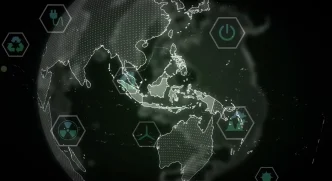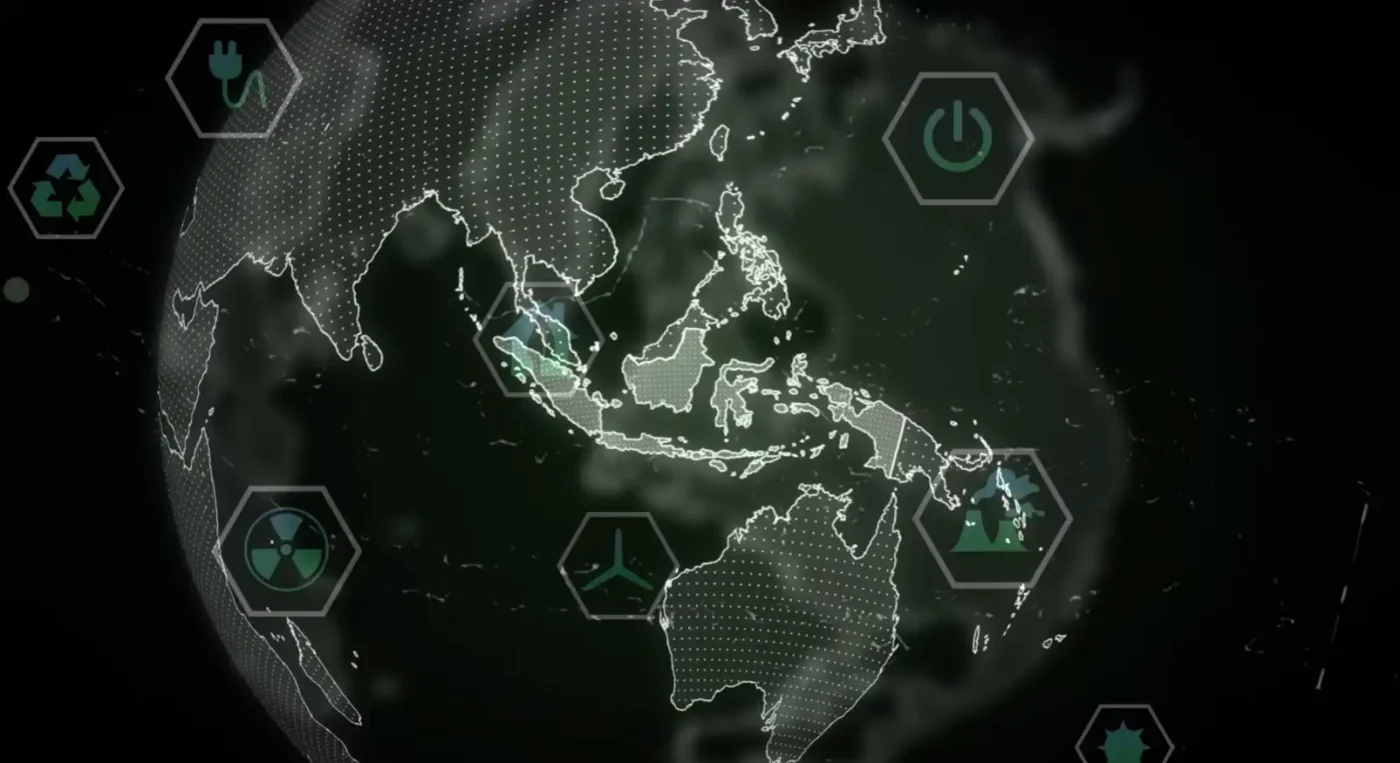Indonesia, Southeast Asia’s largest economy, has set an ambitious goal to increase the share of renewable energy in its national energy mix to 34 percent by the end of 2034. This target, announced as part of the country’s broader commitment to combating climate change and reducing reliance on fossil fuels, signals a significant shift in energy policy for a nation historically dependent on coal. With global pressure mounting to transition to cleaner energy sources, Jakarta’s latest pledge raises both hope and skepticism among environmentalists and industry experts.
A Bold Step Toward Sustainability
The Indonesian government unveiled its updated energy strategy in early 2025, emphasizing a rapid scale-up of renewable sources such as solar, wind, geothermal, and hydropower. The target of 34 percent renewables by 2034 represents a substantial increase from the current share, which hovers around 12 percent, according to data from the Ministry of Energy and Mineral Resources. Coal, which currently accounts for nearly 60 percent of Indonesia’s energy production, is to be gradually phased down, though no firm timeline for a complete exit has been confirmed.
Energy Minister Arifin Tasrif underscored the urgency of the transition during a recent press conference in Jakarta. “We are committed to balancing economic growth with environmental responsibility” he said. “Renewable energy is not just an option; it is a necessity for our future” he added, highlighting plans to attract foreign investment in green infrastructure.
Indonesia’s vast archipelago offers immense potential for renewable energy. The country sits on the Pacific Ring of Fire, making it one of the world’s leading sources of geothermal energy. Additionally, its tropical climate provides abundant solar resources, while rivers and coastal areas present opportunities for hydropower and wind projects. Yet, harnessing this potential has long been hampered by bureaucratic hurdles, inadequate funding, and a lack of technical expertise.
Challenges on the Path to 2034
While the target is ambitious, experts warn that achieving it will require overcoming significant structural and financial obstacles. One major challenge is the entrenched dominance of coal, which not only powers much of Indonesia’s electricity grid but also supports a substantial portion of the national economy through exports. Reducing coal dependency without disrupting jobs and regional economies in coal-heavy areas like Kalimantan will demand careful planning and robust social safety nets.
Financial constraints also loom large. Developing renewable energy infrastructure—such as solar farms, wind turbines, and grid upgrades—requires substantial upfront investment. The government has estimated that reaching the 34 percent target could cost upwards of 1,400 trillion Indonesian Rupiah (US$90 billion), based on current exchange rates as of May 24, 2025. While international partnerships and green financing mechanisms are being explored, securing consistent funding remains a critical concern.
Moreover, Indonesia’s decentralized geography poses logistical difficulties. Delivering renewable energy to remote islands and rural areas necessitates an overhaul of the national grid, a process that could take years and incur additional costs. “The technology exists, but the implementation is complex” said Dr. Lila Sari, an energy policy analyst at the University of Indonesia. “Without streamlined regulations and local government cooperation, projects risk stalling” she warned.
Global Context and National Commitments
Indonesia’s renewed focus on renewables aligns with its commitments under the Paris Agreement, through which the country pledged to reduce greenhouse gas emissions by 29 percent by 2030, or 41 percent with international support. The energy sector, as the largest contributor to Indonesia’s carbon footprint, is a critical battleground for meeting these goals. The push for 34 percent renewables by 2034 is seen as a stepping stone toward the longer-term vision of net-zero emissions by 2060, a target Jakarta announced at the COP26 climate summit.
Internationally, Indonesia’s plans have drawn cautious optimism. The country has secured pledges of support through mechanisms like the Just Energy Transition Partnership (JETP), a US$20 billion deal signed in 2022 with G7 nations and multilateral lenders to accelerate the shift from coal to clean energy. However, progress on JETP implementation has been slow, with critics pointing to delays in disbursing funds and finalizing actionable projects.
On the domestic front, public sentiment appears mixed. While urban Indonesians and environmental groups have largely welcomed the renewable energy target, communities in coal-dependent regions express concern over potential job losses. Posts on social media platforms like X reflect this divide, with some users praising the government’s green ambitions while others question the feasibility of the timeline. “Coal built our economy—how do we replace it in just a decade?” asked one user based in East Kalimantan.
Opportunities for Innovation and Growth
Despite the challenges, the shift to renewables presents significant opportunities for economic diversification and technological innovation. Indonesia’s geothermal capacity, already among the highest in the world, could be further expanded with targeted investments. Solar energy, too, holds immense promise, particularly in densely populated areas like Java, where rooftop solar installations are gaining traction among businesses and households.
The government is also eyeing job creation in the renewable sector as a counterbalance to losses in fossil fuel industries. Training programs for technicians, engineers, and project managers are being rolled out in partnership with international organizations, aiming to build a skilled workforce capable of sustaining the green transition. “This is not just about energy; it’s about transforming our economy” said a senior official from the Ministry of Energy and Mineral Resources.
Private sector involvement will be crucial. Major Indonesian conglomerates, alongside foreign investors, are beginning to explore opportunities in renewables. For instance, plans for floating solar farms on reservoirs and coastal wind projects have attracted interest from companies in Japan and Europe, signaling growing confidence in Indonesia’s green market potential.
Balancing Economic and Environmental Priorities
As Indonesia charts its path toward a 34 percent renewable energy mix by 2034, the interplay between economic imperatives and environmental goals will remain a central tension. The government must navigate the delicate task of phasing out coal while ensuring energy security for a population of over 270 million. Affordable electricity is non-negotiable for sustaining industrial growth and improving living standards, yet the environmental cost of fossil fuel reliance is increasingly untenable.
Environmental activists argue that the 34 percent target, while a step forward, falls short of what is needed to address the climate crisis. Groups like Greenpeace Indonesia have called for a more aggressive timeline, urging the government to aim for at least 50 percent renewables by 2030. “Every year of delay means more emissions and more damage” said a spokesperson for the organization during a recent rally in Jakarta.
Conversely, industry stakeholders caution against moving too quickly. The Indonesian Coal Mining Association has emphasized the need for a “just transition” that prioritizes workers and communities dependent on coal. “We support sustainability, but it cannot come at the expense of livelihoods” said a representative in a statement to local media.
Looking Ahead
As Indonesia embarks on this transformative journey, the road to 2034 will test the nation’s resolve and capacity for change. Success will hinge on securing funding, streamlining regulations, and fostering collaboration between government, industry, and civil society. While the 34 percent renewable energy target marks a pivotal moment in Indonesia’s climate strategy, questions linger about whether the pace and scale of implementation can match the ambition.
For now, the world watches as Southeast Asia’s largest economy strives to redefine its energy future. Whether this bold vision translates into tangible progress remains to be seen, but the stakes—for Indonesia and the planet—could not be higher.
















